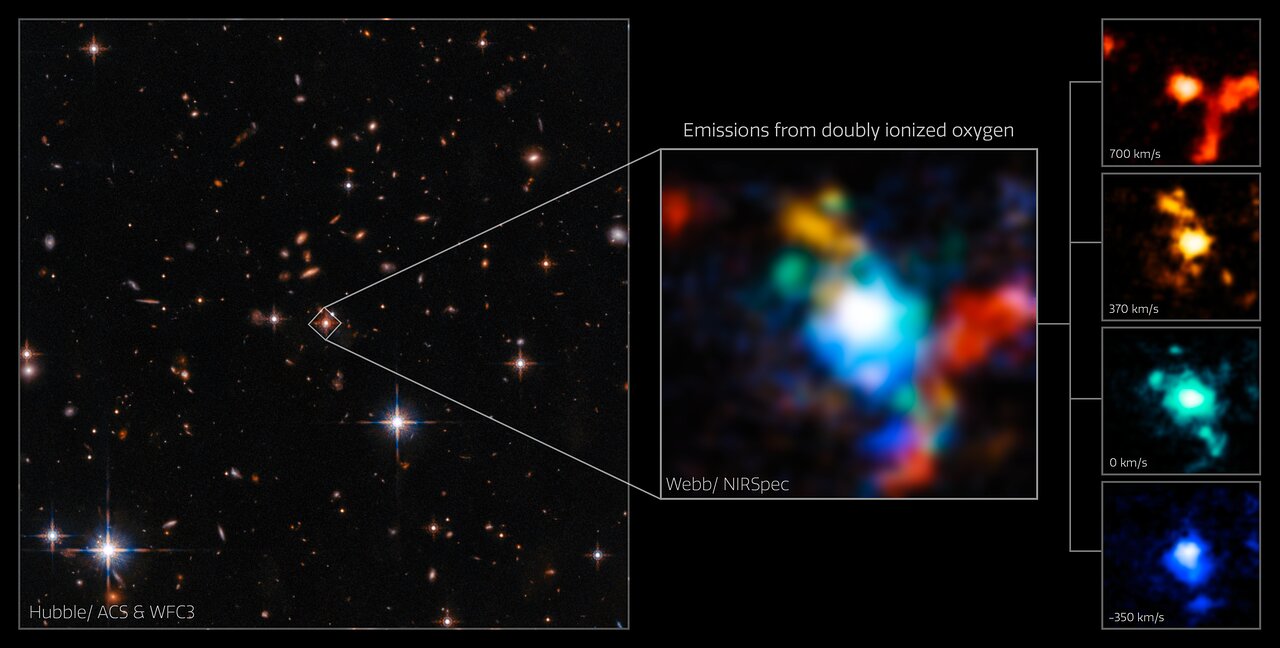Astronomers have discovered clusters of galaxies merging around a rare quasar – a supermassive black hole that greedily feeds on the surrounding gas and matter. To take a closer look at the amazing discovery, scientists used the James Webb Space Telescope (JWST) to look at what happened billions of years ago. This finding makes it possible to observe how early galaxies merged to form the modern universe.

The unusually bright and distant quasar, known as SDSS J165202.64+172852.3, is about 11.5 billion years old and is one of the most powerful ever observed from such a vast distance. Previous observations of this area of space using the Hubble Space Telescope and the Gemini North Telescope in Hawaii have detected a quasar resembling a galaxy in transition. But further observation with the help of JWST revealed not one, but at least three galaxies orbiting a single quasar. Scientists were amazed by the detail of the image provided by James Webb.
Images from the observed region also showed that the three galaxies are moving incredibly fast, indicating a huge mass between them. It turned out that they saw the densest region of galaxy formation ever seen in the early universe. This led the team to assume that it was a fusion of two dark matter halos.
“We think that in this area two massive dark matter halos are merging together,” said Dominika Vilezalek, an astronomer at Heidelberg University in Germany who led the research.
Now the team will try to continue observing this unexpected cluster of galaxies, hoping to unravel the mysteries of how such dense groups of galaxies formed in the early Universe and how this process is influenced by the supermassive black holes hiding among them.
Earlier we talked about how James Webb captured the Pillars of Creation.
According to ESA
Follow us on Twitter to get the most interesting space news in time
https://twitter.com/ust_magazine

